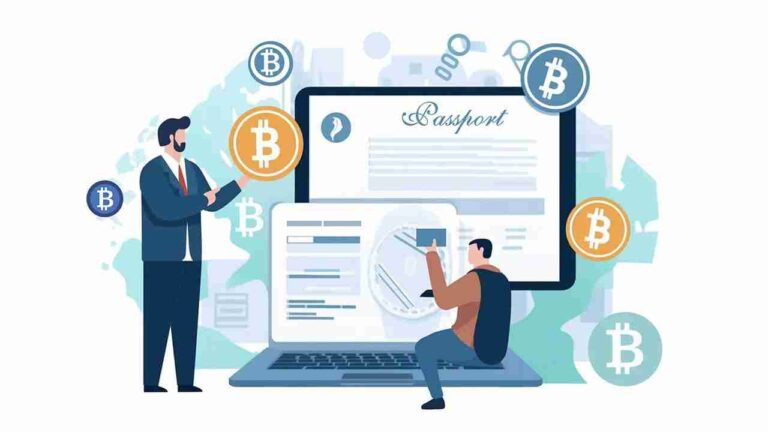- 1. The Source of Wealth: How the Tribe Generates Income
- 2. Payment Breakdown: The Structure of Individual Dividends
- 3. Eligibility and Distribution: Who Receives Payments and How
- 4. Financial Impact on Members: From Childhood to Adulthood
- 5. Cultural and Social Impact: How Payments Affect the Tribe
- 6. Future Considerations: Sustainability and Changes
The Seminole Tribe in Florida has crafted an economic model that not only sustains its members but also prospers them. Each member of the tribe receives a series of bi-weekly payments, accumulating to a notable annual sum. Furthermore, mechanisms are in place to ensure that by adulthood, young members have substantial financial resources at their disposal. This article delves into the specifics of these payments, from their source to their impact on the community and individual recipients. For a broader look at how the Seminole Tribe achieved this level of financial autonomy, you can read the Seminole tribe story on Compacom.
The Source of Wealth: How the Tribe Generates Income
The economic prosperity of the Seminole Tribe is not a result of mere chance; it’s a carefully orchestrated outcome of various business ventures and investments. Over the years, the tribe has successfully diversified its income streams, moving beyond traditional revenue sources like agriculture and crafts. Today, the Seminole Tribe owns and operates a range of businesses that include gaming facilities, hotels, and retail outlets among others.
One of the most notable contributions to the tribe’s revenue comes from its ownership of the Hard Rock franchise, which includes cafes, hotels, and casinos across the globe. The gaming industry, in particular, has been a substantial revenue generator, allowing the tribe to accrue the wealth that gets distributed as monthly payments to its members.
This diversification and successful foray into various business avenues have not only provided a steady income for community projects and infrastructure but also paved the way for the unique system of individual payments. In turn, this financial stability enhances the tribe’s ability to plan for the future and invest in community development, education, and healthcare.
Payment Breakdown: The Structure of Individual Dividends
A significant aspect of the Seminole Tribe’s financial model is the distribution of individual dividends to its members. This is facilitated through bi-weekly payments that, when summed up, amount to approximately $128,000 per year for each member of the tribe, regardless of age.
It’s not just the adults who benefit from this income; from birth, every child in the tribe becomes a recipient of these payments. However, access to these funds is restricted until the child reaches adulthood. The accumulated wealth, safely stored in tribal trusts, ensures that by the age of 18, a young Seminole Tribe member has financial resources worth multiple millions of dollars at their disposal.
The structure of these dividends is planned to provide a sustainable and significant income, aiming to cover basic living expenses and offer financial security. This model empowers tribe members to plan for long-term goals such as education, home ownership, and retirement, thereby contributing to overall financial well-being.
Eligibility and Distribution: Who Receives Payments and How
Eligibility for the Seminole Tribe’s monthly payments is strictly governed by a set of criteria to ensure fair and transparent distribution. Here are some of the key factors that determine eligibility:
- Tribal Membership. The individual must be a registered member of the Seminole Tribe of Florida.
- Age. There is no age limit for eligibility. Payments are made to members from the time they are born.
- Bank Account. Members must have a bank account where the bi-weekly payments can be directly deposited.
Once an individual meets these criteria, they become eligible for the bi-weekly payments that are directly deposited into their bank accounts. The tribe has a structured system in place that meticulously manages the disbursement of these payments to ensure timely and accurate distribution. This structure enables the tribe to offer financial security to its members from the earliest stages of their lives.
Financial Impact on Members: From Childhood to Adulthood
The economic benefits of receiving a stable and substantial income from tribe dividends are manifold. An annual income of approximately $128,000 offers tribe members the freedom to make strategic life decisions without the constant pressure of financial instability. This income can be used to finance education, secure quality healthcare, invest in real estate, or even fund business ventures. For many, these dividends open doors to opportunities that would otherwise be out of reach, such as pursuing higher education or investing in high-return assets.
One of the tribe’s most prudent financial practices is the establishment of trust mechanisms designed to safeguard the financial future of its younger members. These trusts prevent the disbursement of funds to minors, allowing the money to accumulate over the years. When a young member reaches the age of 18, they gain unrestricted access to their trust, which by that time has grown into a multimillion-dollar fund. This provides an immense financial advantage, offering young adults a head start in life, be it for educational investments, property acquisitions, or other forms of personal development.
Cultural and Social Impact: How Payments Affect the Tribe
The financial security afforded by these payments has a profound impact on the cultural and social fabric of the Seminole Tribe. The dividends not only alleviate economic stress but also contribute to a stronger sense of community. Members are more likely to invest in community projects, educational programs, and cultural preservation efforts. However, the payments can also be a subject of internal discussions, particularly about how they may influence traditional values, work ethics, and social dynamics within the tribe.
Though the monthly payment system has garnered praise for its effectiveness in distributing wealth among tribe members, it is not without its critics. Some argue that these payments could potentially disincentivize younger members from pursuing education or entering the workforce. Others raise questions about economic sustainability and the ethical considerations of profiting from industries such as gaming. These diverse opinions contribute to an ongoing dialogue within and outside the tribe, weighing the benefits and drawbacks of this unique financial model.
Future Considerations: Sustainability and Changes
As the Seminole Tribe continues to grow and diversify its income sources, questions about the sustainability of these monthly payments arise. Will the income generated from current business ventures suffice to maintain the present level of individual dividends? Are there plans to invest in future-proof industries? How will changes in state and federal regulations affect the tribe’s income and, by extension, these payments? These are critical questions that could dictate the future of the tribe’s financial disbursement model.







